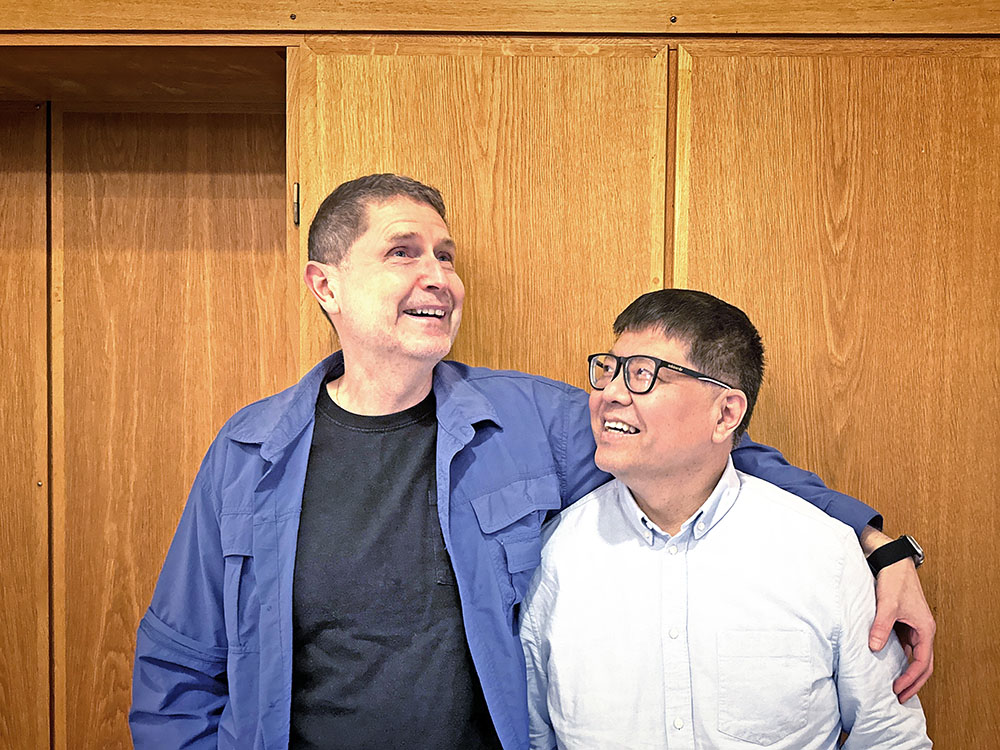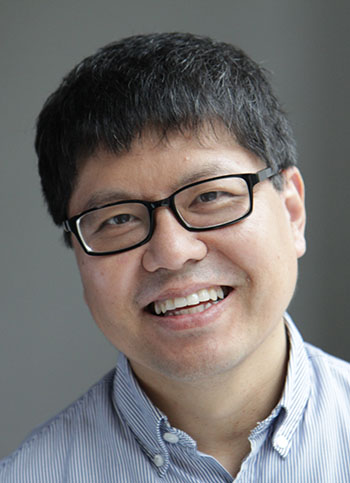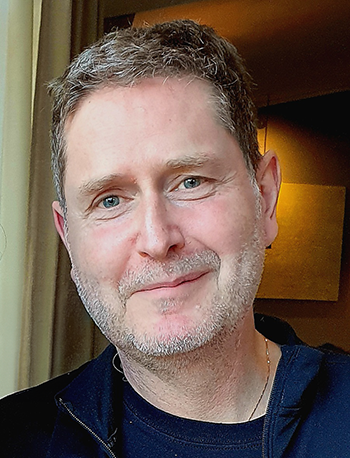Generative AI course is one of KTH’s most popular

A course on generative AI is one of the most popular offerings at KTH Royal Institute of Technology. Two instructors explain why demand for the course is so high, what students can expect to learn, ethical considerations, and the future of generative artificial intelligence.
In a short time, artificial intelligence has become ingrained in our daily lives. The starting point of this revolution is often seen as November 30, 2022, when ChatGPT was launched to the general public, shaking the internet and the world beyond.
A deep curiosity aroused
KTH lecturers Haibo Li and Anders Hedman specialise in generative AI, which is usually what people mean when they talk about AI. They are responsible for “Generative AI for Media Technology and Interaction Design,” one of KTH’s most popular courses. Li, a professor of media technology at KTH, points to three key factors that he credits for the course’s popularity: surprise, curiosity, and expectation.

"ChatGPT hasn’t just surprised and impressed people with its advanced conversational abilities; it’s also sparked a deep curiosity about the technology behind it,” Li says. “Combined with high expectations for its practical applications, these factors have driven great interest in learning more about generative AI."
He then adds the course was the first master’s level course Sweden to focus on generative AI. Hedman, a senior lecturer in media technology and interaction design at KTH, shares his thoughts.
“Generative AI is something many people want to understand for practical reasons. In a short time, it’s become a standard tool across various professions and for personal use, Hedman says. “It’s important for many to comprehend the technology and learn how to use these tools effectively. Many also want to understand how the technology fits into society more broadly — what generative AI means for the future of work and our society.”
Several ethical considerations
What do students learn on the course? A great deal. The course aims to provide a comprehensive and critical overview of generative AI from three perspectives: technical, historical, and philosophical. By exploring these dimensions, students gain a deep and nuanced understanding of generative AI and its broader implications. Or, as Hedman puts it, “You must know where we’re coming from to fully understand where we’re headed.”
Li and Hedman say sustainability is one of several ethical issues to consider when it comes to using generative AI. They argue that we have a moral obligation to consider the sustainability of current AI development. Is it justified, for example, to use vast amounts of energy to train AI models? What will happen to our AI-driven society in the long run as more and more information is generated artificially? What happens when models start reusing their own output?

What should and shouldn’t be automated?
It’s also essential to consider social sustainability in the context of generative AI. How will it continue to impact working life? Which jobs are at risk, and how do we want to live and work in the future? What should and shouldn’t be automated?
"Addressing the ethical aspects of generative AI is crucial for the responsible development and use of these technologies. By focusing on alignment with human values and emphasising competence-based ethics, we equip students with the knowledge needed to create and manage AI systems that are not only effective but also ethically sound," Lis says.
"Traditional ethical questions about autonomy and intellectual property remain important. In a world of generated intellectual content, how can you flourish as an independent individual with a sense of ownership over what you produce?" Hedman says.
The difference between the speed of sound and light
Finally, what does the future of generative AI hold over the next ten years?

Li says many see AI as a technology that has achieved superintelligence. But that’s not the case.
"The reality is that we haven’t yet developed any truly intelligent machines,” he says. “The AI systems we have today are examples of weak AI — they’re designed to simulate human intelligence and perform specific tasks or multitask, rather than possessing true general intelligence. Despite this, these systems have proven exceptionally powerful in simulating human intelligence and significantly boosting productivity in various fields.”
"AI models will continue to improve, but the real leap will come with quantum computers,” Hedman says. “Today’s generative AI development uses traditional computing technology to push the boundaries of what’s possible. It works well enough for corporate giants with nearly unlimited resources, but compared to quantum computers, it’s like trying to build a high-speed train with a steam engine. In fact, the situation is much worse than that, as the difference in speed between today’s conventional computers and tomorrow’s quantum machines is like the difference between the speed of sound and the speed of light."
Hedman adds quantum computers could make AI development more sustainable, thanks to their significantly better energy-to-performance ratio.
Text: Peter Asplund
